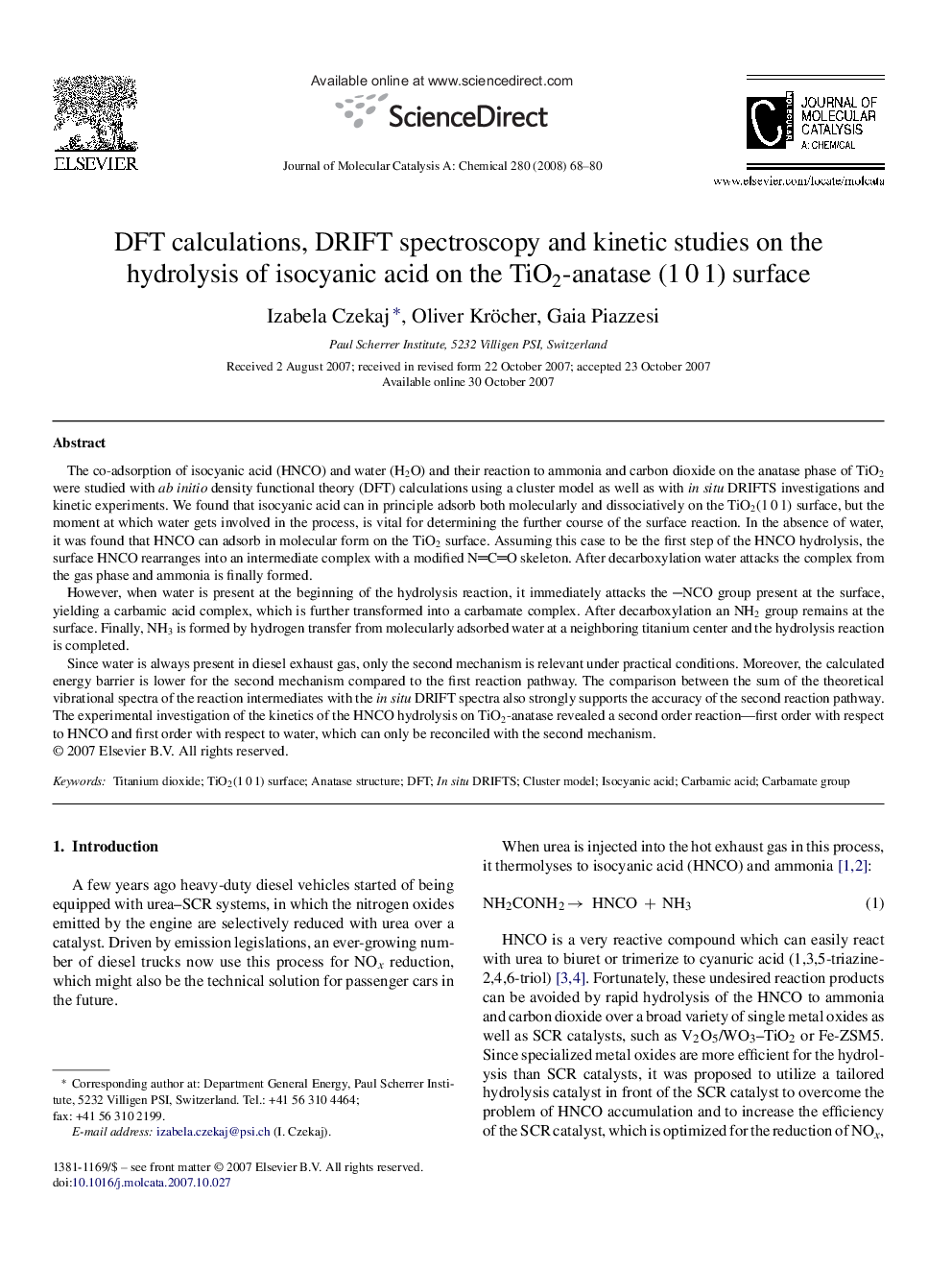| کد مقاله | کد نشریه | سال انتشار | مقاله انگلیسی | نسخه تمام متن |
|---|---|---|---|---|
| 68516 | 48516 | 2008 | 13 صفحه PDF | دانلود رایگان |

The co-adsorption of isocyanic acid (HNCO) and water (H2O) and their reaction to ammonia and carbon dioxide on the anatase phase of TiO2 were studied with ab initio density functional theory (DFT) calculations using a cluster model as well as with in situ DRIFTS investigations and kinetic experiments. We found that isocyanic acid can in principle adsorb both molecularly and dissociatively on the TiO2(1 0 1) surface, but the moment at which water gets involved in the process, is vital for determining the further course of the surface reaction. In the absence of water, it was found that HNCO can adsorb in molecular form on the TiO2 surface. Assuming this case to be the first step of the HNCO hydrolysis, the surface HNCO rearranges into an intermediate complex with a modified NCO skeleton. After decarboxylation water attacks the complex from the gas phase and ammonia is finally formed.However, when water is present at the beginning of the hydrolysis reaction, it immediately attacks the NCO group present at the surface, yielding a carbamic acid complex, which is further transformed into a carbamate complex. After decarboxylation an NH2 group remains at the surface. Finally, NH3 is formed by hydrogen transfer from molecularly adsorbed water at a neighboring titanium center and the hydrolysis reaction is completed.Since water is always present in diesel exhaust gas, only the second mechanism is relevant under practical conditions. Moreover, the calculated energy barrier is lower for the second mechanism compared to the first reaction pathway. The comparison between the sum of the theoretical vibrational spectra of the reaction intermediates with the in situ DRIFT spectra also strongly supports the accuracy of the second reaction pathway. The experimental investigation of the kinetics of the HNCO hydrolysis on TiO2-anatase revealed a second order reaction—first order with respect to HNCO and first order with respect to water, which can only be reconciled with the second mechanism.
The co-adsorption of isocyanic acid (HNCO) and water (H2O) and their reaction to ammonia and carbon dioxide on the anatase phase of TiO2 were studied with ab initio density functional theory (DFT) calculations using a cluster model as well as with in situ DRIFTS investigations and kinetic experiments.Figure optionsDownload as PowerPoint slide
Journal: Journal of Molecular Catalysis A: Chemical - Volume 280, Issues 1–2, 4 February 2008, Pages 68–80